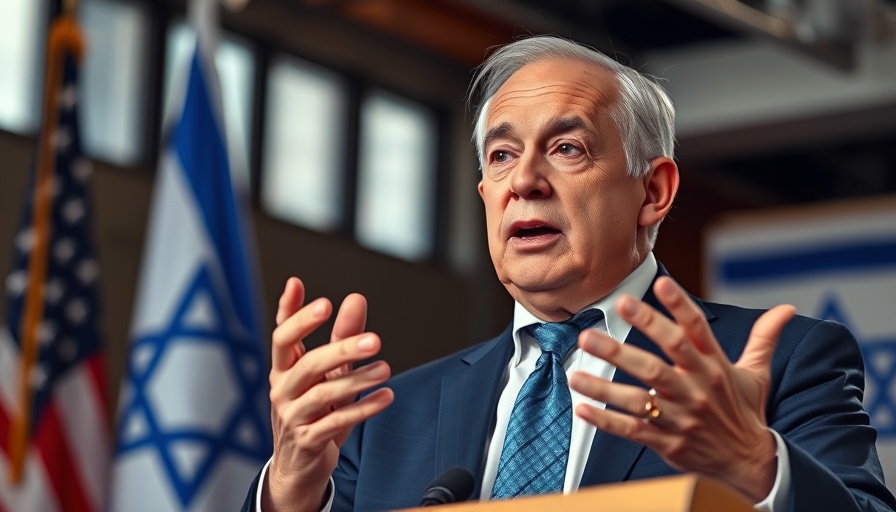
Understanding the Complex Landscape of Israeli Politics and the Gaza Peace Deal
As the world witnessed significant developments in the Israeli-Palestinian conflict, one question looms large: Why did Israel and Hamas finally agree to a ceasefire and peace negotiations now? With the recent agreement marking a pivotal moment, it’s crucial to analyze the factors at play in this long-standing struggle.
The Pressure to Compromise: Domestic and International Dynamics
After nearly two years of violent conflict, which has resulted in the deaths of over 67,000 Palestinians, there has been immense pressure on both sides to seek a resolution. Domestically, Israeli Prime Minister Benjamin Netanyahu faced dwindling support among citizens who were fed up with the prolonged hostilities. Surveys indicated that approximately two-thirds of Israelis believed it was time to end the war, including significant support from families of hostages who pushed for a resolution.
Internationally, the pressure mounted as various allies recognized Palestinian statehood and expressed concern over the humanitarian crisis in Gaza. This shift in sentiment from major allies—including Arab countries—if leveraged skillfully, could enhance opportunities for peace. With global attention focused on the humanitarian disaster, Netanyahu was compelled to explore diplomatic avenues.
The Role of Diplomacy: Trump's 20-Point Plan
Central to the negotiations was U.S. President Donald Trump's 20-point peace plan. Trump’s administration played a decisive role in shaping the dynamics of the agreement. Insights from various officials suggested that Trump's relentless diplomacy—balancing pressure on both Israel and Hamas—was necessary in pushing them toward compromise. For instance, he provided assurances that the release of hostages could be the first step towards a more comprehensive dialogue.
Hamas, facing increasing pressure from regional powers worried about continued conflict, had little choice but to accept. The group recognized the necessity of securing the release of hostages to reduce Israeli military pressure on Gaza and improve its standing in negotiations.
The Agreement's Terms and Remaining Challenges
The peace agreement stipulated a ceasefire, and the release of hostages with a corresponding exchange of Palestinian prisoners—a significant leap in trust. Yet, as past negotiations have shown, the details matter. Key obstacles remain unresolved, particularly concerning the disarmament of Hamas and establishing sustainable governance in Gaza. Without clarity on these points, the risks of a breakdown are real, with tensions likely to resurface without a solid implementation strategy.
Regional Implications: A New Phase for Middle East Relations
Succeeding in the Gaza deal could open pathways for Israel to redefine its relationships within the Middle East, as Trump hinted at ambitions for broader regional peace. If managed properly, Israel has the opportunity to transition from a militaristic strategy to one that employs diplomacy and international agreements, potentially fostering a more stable regional environment.
However, hardliners within Netanyahu's coalition oppose any concessions to Hamas, insisting that the group's armed capabilities must be dismantled. This internal conflict raises questions about the future stability of the Israeli government process and its impact on forthcoming peace negotiations.
Public Sentiment: A Nation Divided Yet Hopeful
Amidst these negotiations, public sentiment plays a significant role in shaping the future of both societies. Celebrations erupted in Gaza and Israel after the announcement of the ceasefire, highlighted by emotional gatherings of families of hostages and grateful civilians. The genuine expressions of joy and relief reveal a shared desire for peace. Yet, underlying apprehensions linger about whether this agreement can lead to lasting stability or whether it merely postpones further conflict.
Conclusion: The Path Forward for Israeli-Palestinian Relations
As negotiations between Hamas and Israel progress, clear and actionable steps will be essential for ensuring a sustainable peace process. Both sides must address the challenges that remain—specifically regarding disarmament, governance, and social integration following a long conflict. Ongoing communication, pressure from international allies, and a unified vision for the region’s future could collectively contribute to a reimagined Middle East.
Ultimately, the success of this agreement hinges not only on political negotiations but on the authentic desire for peace shared by the citizens on both sides. As noted by observers, the potential for lasting change exists, and the world watches closely. The agreement raises critical questions about how each faction will navigate this new landscape, and whether they can embrace change or revert to mistrust and hostility.
In an era of easing tensions, understanding the intricacies of these negotiations is vital for readers interested in international relations and Middle Eastern politics. Stakeholders must remain engaged to ensure that peace is not just a fleeting dream but a collective reality.
 Add Element
Add Element  Add Row
Add Row 



Write A Comment